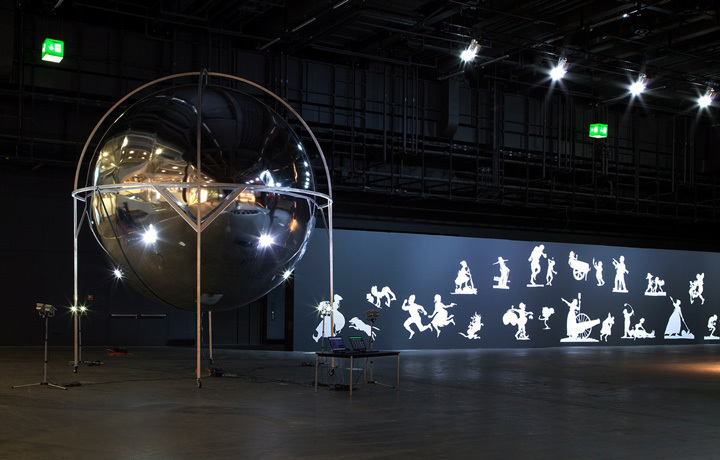TREVOR PAGLEN
Art Unlimited, Art Basel
Messe Basel, Hall 1
Prototype for a Nonfunctional Satellite (Design 4, Build 4) is a 7.3-meter-tall model for an orbital spacecraft that has no military, scientific or commercial function. Developed with aerospace engineers, the inflatable sculpture is designed to be placed into low-earth orbit and reflect sunlight from space to the earth's surface. Once launched it will appear as a point of light slowly moving across the sky. The spacecraft will orbit for several weeks before harmlessly burning up upon reentry to the earth's atmosphere.
In this work Paglen asks what aerospace engineering would look like if its methods were decoupled from the corporate and military interests underlying the industry. His nonfunctional satellite recasts the old question of "art for art's sake" within a different field, asking whether we can imagine something like "aerospace engineering for aerospace engineering's sake." In other words, is it possible to build a satellite that is the exact opposite of every other satellite ever placed into space? Thus, the spacecraft functions as both a critique of the militarization and commercialization of the night sky.
At Art Unlimited the satellite is placed in an aluminum frame with a circle of lamps surrounding it; accompanying electronics provide diagnostic information and run a real time mission simulation.
Trevor Paglen holds an MFA from the School of the Art Institute of Chicago and a Ph.D. in Geography from U.C. Berkeley. Paglen has had one-person exhibitions at: the Vienna Secession, Berkeley Art Museum; Kunsthall Oslo; Kunsthalle Giessen, Germany. His work has been included in group shows at: MIT List Visual Arts Center, Cambridge, MA; SITE Santa Fe, New Mexico; Haus der Kunst, Munich; Walker Art Center, Minneapolis; Tate Modern, London and San Francisco Museum of Modern Art. He has participated in the 2009 Istanbul Biennial and 2012 Liverpool Biennial. His work in included in the collections of The Metropolitan Museum of Art, New York; The San Francisco Museum of Modern Art, California; and Smithsonian American Art Museum, Washington, D.C.
